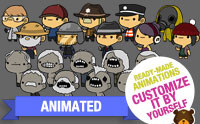How the Query system in Unity Mars does procedural layout
Posted in TechnologyThe Query system in Unity Mars simplifies the creation of augmented reality (AR) experiences that adapt to the real world around them. Based on constraints that you specify, it finds a way to lay out the scene in a given environment. Read on to learn more about how it works. We designed Unity Mars to help creators make context-adaptable AR. We hoped to solve the primary issues AR developers face: defining content relative to the real world, iteration time and testing in environments, and adapting the way virtual content is laid out in varying real-world environments. We call this the adaptable content problem. Queries are Unity Mars’ way of solving the adaptable content problem. For each distinct piece (or group of pieces) of virtual content that needs to integrate into a place in the real world, Unity Mars devises a query – a request for semantically tagged data that describes part of the real world. Queries have two high-level pieces:
One or more conditions that define what data can match the query
One or more actions that specify what to do when Unity Mars finds a match
Each query is created either by a Proxy, which represents the link between the virtual content and the real world, or by multiple proxies in a Proxy Group.
Continue reading "How the Query system in Unity Mars does procedural layout"